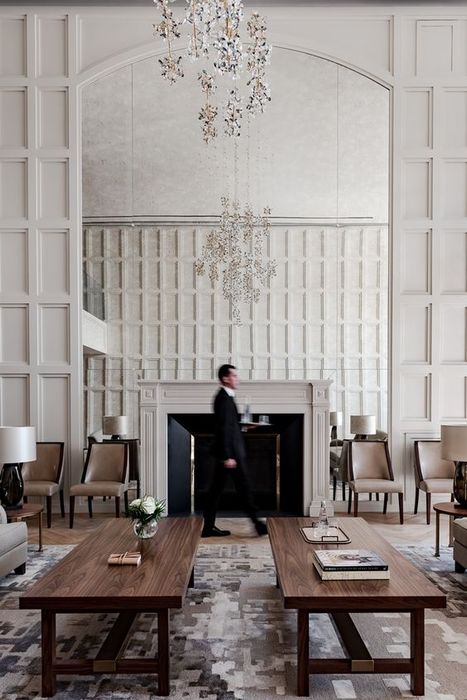
The Evolution of Hotel Lobby Interior Design
The Evolution of Hotel Lobby Design: From Exclusive Luxury to Inclusive Community Hub
Introduction: The Role of the Hotel Lobby Through the Ages
In the world of hospitality, the hotel lobby is a vital space that shapes the first impression of guests. Once simply a check-in area, the lobby has become a multi-functional space reflecting design trends, technological advances, and evolving guest expectations. From the early opulent lobbies to today’s sustainable, flexible, and tech-savvy spaces, lobby design has come a long way. This article explores the history, key phrases, and modern trends in hotel lobby design, providing insights for hospitality professionals, designers, and curious travellers alike.
1. The Grand Beginnings: 19th and Early 20th-Century Opulence
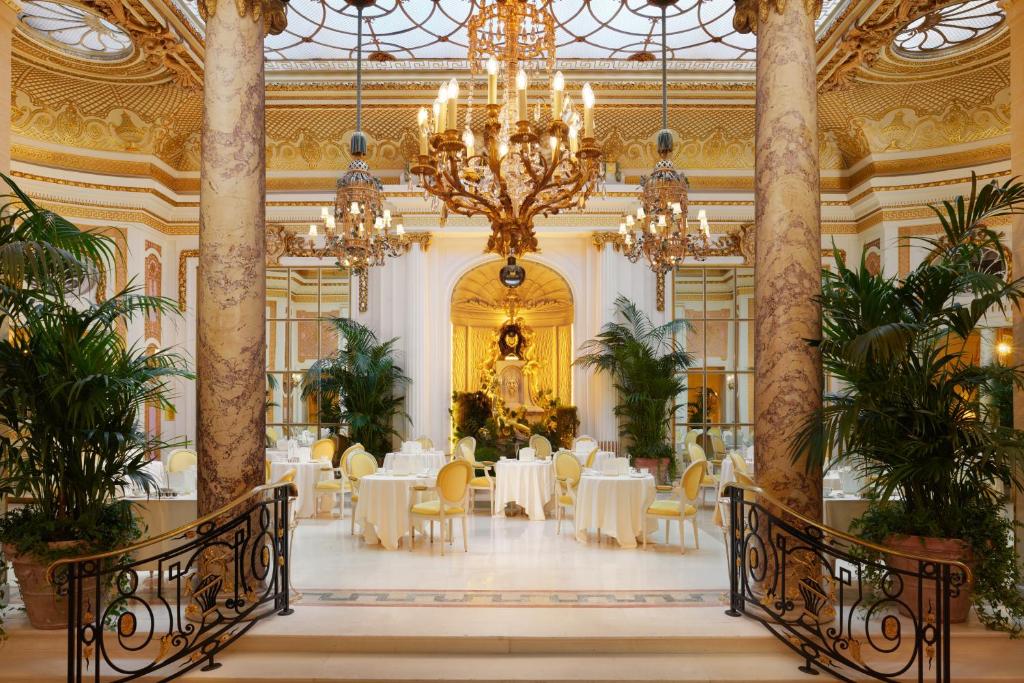
1.1 The Rise of Luxury Hotels
In the late 19th century, hotels like The Ritz London and The Waldorf Astoria New York revolutionised hospitality, introducing luxury lobbies designed to impress the elite. These spaces were luxury masterpieces, with intricate marble floors, crystal chandeliers, and grand staircases.
1.2 Key Features of Classic Lobbies
Rich Materials: Marble, velvet, and crystal defined the grandeur.
Symmetrical Layouts: Classic lobbies often followed a structured layout, symbolising order and elegance.
Lavish Seating and Decor: Plush sofas, gilded mirrors, and fine artwork made these spaces feel almost royal.
1.3 Iconic Examples
The Ritz, London (1906): César Ritz’s London hotel established luxury as the foundation of a hospitality experience.
The Waldorf Astoria, New York (1931): Known for its Art Deco design, this lobby became a standard for American luxury with murals, rich textures, and opulent decor.
These lobbies were spaces where guests could relax, socialise, and revel in the splendour that epitomised the golden age of hospitality.
2. Mid-20th Century: The Shift to Modern Minimalism
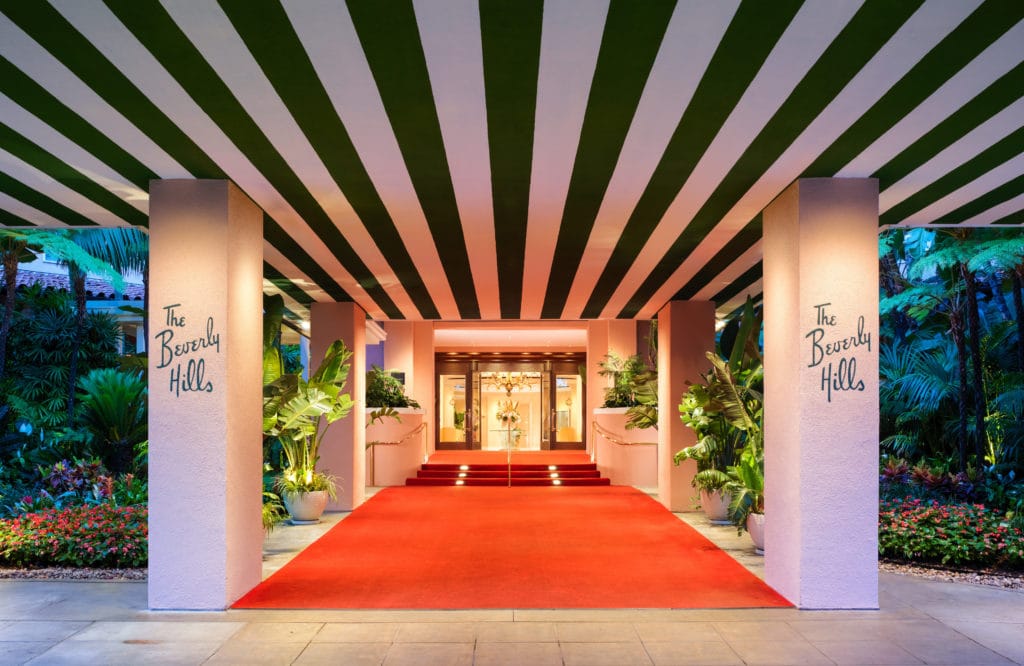
2.1 A New Era of Design
After World War II, hotels began to favour modernism, adopting a streamlined aesthetic that reflected efficiency and functionality. Influenced by mid-century modern design, these spaces used clean lines, open layouts, and natural materials.
2.2 Characteristics of Mid-Century Lobbies
Minimalist Decor: Metal, glass, and concrete replaced ornate detailing.
Open Floor Plans: Spaces became more open and interconnected.
Modernist Art and Furnishings: Art took on abstract forms, and furniture embraced the simplicity of designers like Charles and Ray Eames.
2.3 Influential Hotels and Brands
Hilton Hotels: Embraced mid-century design, using open spaces and natural materials to create functional elegance.
The Beverly Hills Hotel: Underwent a modernisation that balanced the Hollywood glamour of the 1940s with the new minimalist design trends.
Mid-century lobbies mirrored societal shifts, offering sleek, accessible spaces focused on comfort without the excess of traditional luxury.
3. Boutique Hotels of the 1980s and 90s: Eclectic, Personalised Spaces
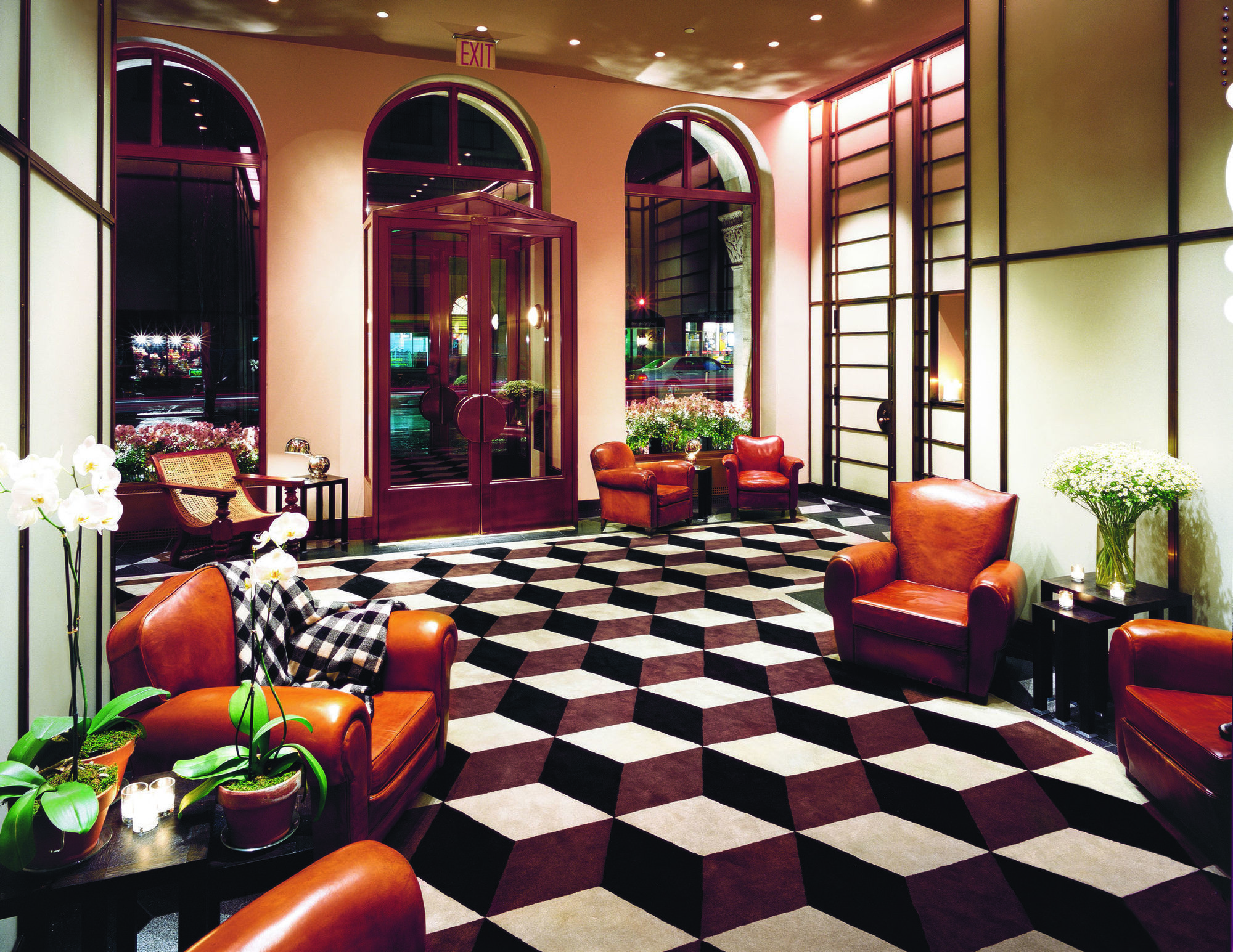
3.1 The Birth of Boutique
The boutique hotel boom in the 1980s and 90s saw lobbies become extensions of the brand, with each hotel creating its own unique atmosphere. Boutique lobbies were intimate, memorable, and a stark contrast to the impersonal lobbies of large hotel chains.
3.2 Defining Features
Personalised Decor: Bold patterns, eclectic artwork, and custom furnishings created a distinct atmosphere.
Cosy Layouts: Small, comfortable spaces invite guests to linger and enjoy the ambience.
Mixing Styles: Designers blended vintage and modern styles to create an eclectic look that resonated with travellers seeking individuality.
3.3 Landmark Boutique Hotels
Morgans Hotel, New York (1984): Designed by Andrée Putman, Morgans Hotel pioneered the boutique concept, with a minimalist lobby that emphasised clean lines and monochromatic tones.
Hotel Costes, Paris (1995): Designed by Jacques Garcia, this lobby combined traditional French opulence with modern elements, creating a cosy yet luxurious feel.
Boutique hotel lobbies became spaces of self-expression, redefining the role of the lobby as a key part of the guest experience.
4. The Early 2000s: Technology and Digital Integration
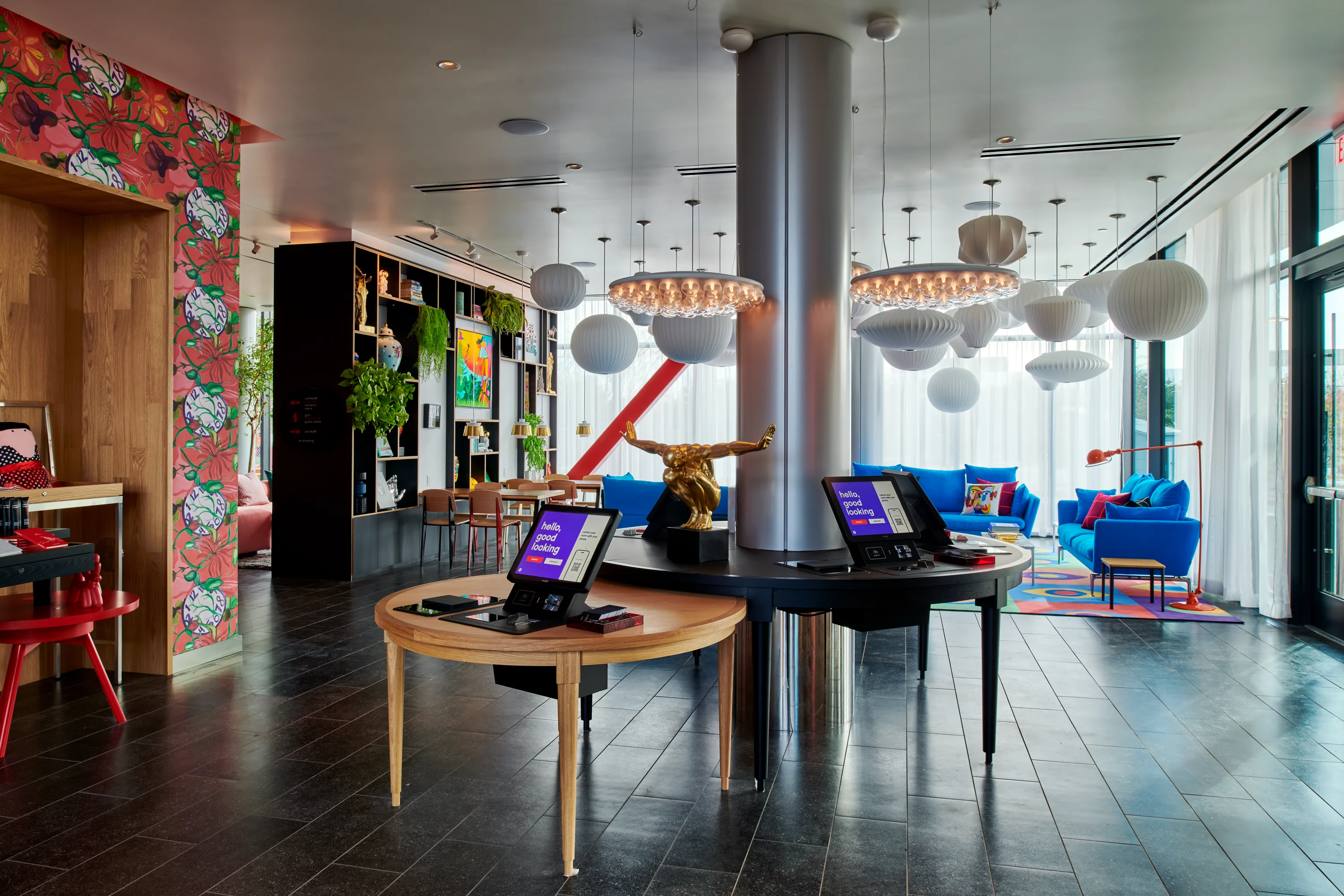
4.1 The Tech Revolution in Hospitality
With the rise of digital technology, hotel lobbies adapted to meet the demands of a more tech-savvy clientele. Digital check-ins, free Wi-Fi, and mobile concierge services became standard, especially in hotels aimed at business travellers.
4.2 Key Features of Tech-Savvy Lobbies
Digital Kiosks and Self-Check-In: Streamlined check-in processes became popular, reducing wait times and enhancing guest convenience.
Multi-Functional Furniture: Furniture with built-in charging stations and USB ports catered to travellers needing constant connectivity.
Business Hubs: Many lobbies included workspaces with printers, charging stations, and high-speed internet.
4.3 Noteworthy Examples
W Hotels: W pioneered the “Living Room” concept, turning lobbies into vibrant, tech-integrated social spaces.
CitizenM: Known for its tech-driven approach, CitizenM caters to a modern audience with self-check-in kiosks and mobile-controlled rooms.
Technology transformed lobbies into highly functional spaces that went beyond aesthetics, adding efficiency and enhancing the guest experience.
5. 2010s: Social Hubs and Flexible Spaces
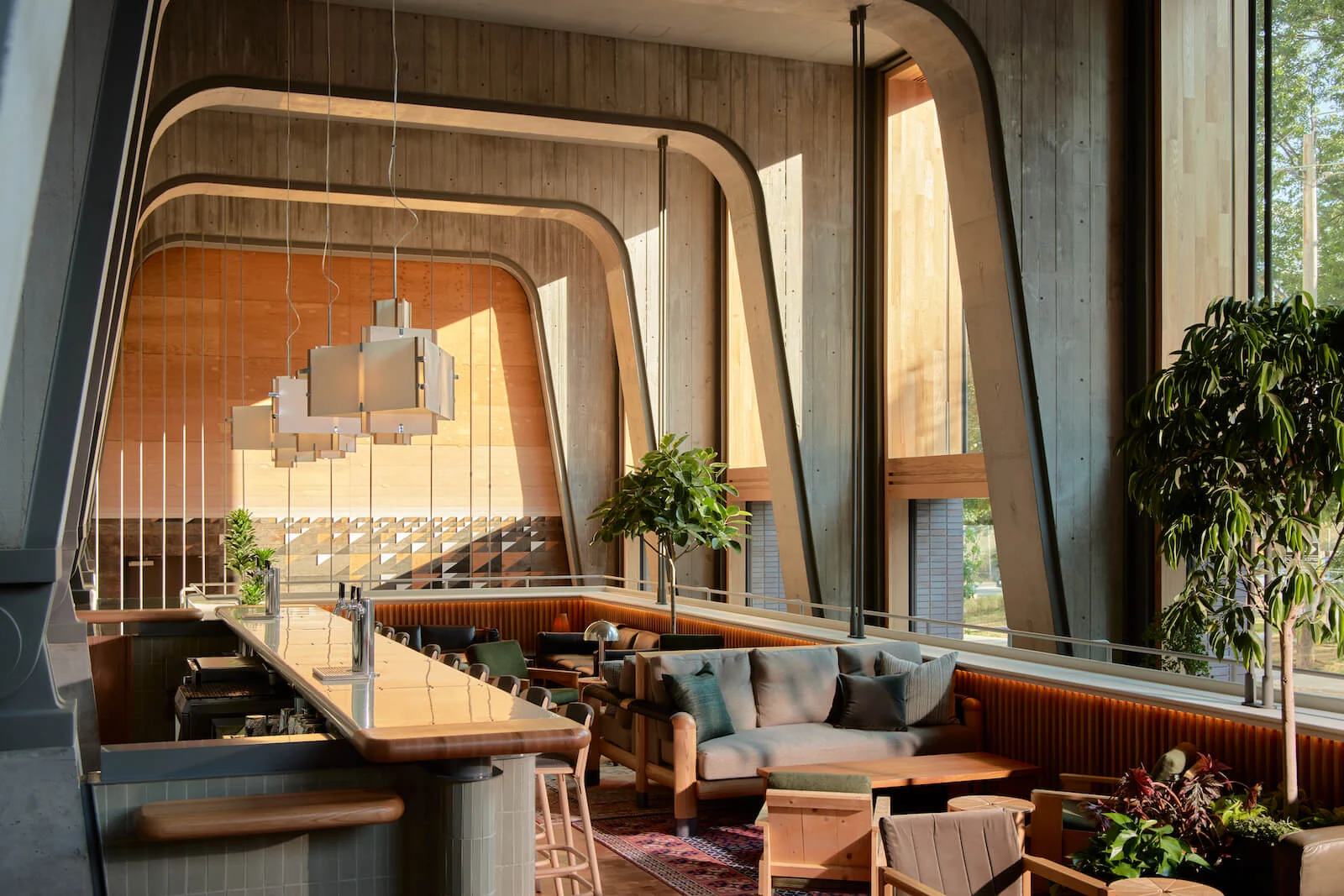
5.1 A New Social Space
With the rise of remote work and social media, lobbies transformed into communal areas where guests could work, socialise, or simply relax. Open-plan designs became the standard, with flexible layouts that allowed guests to seamlessly transition between activities.
5.2 Design Trends
Open Seating and Communal Tables: Encouraged social interaction among guests.
Blend of Work and Leisure: Lobbies included both casual seating and quiet workspaces to cater to various needs.
Natural Materials: The influence of Scandinavian and contemporary design brought in warm woods, neutral tones, and soft lighting.
5.3 Key Players
Ace Hotels: Known for its vibrant lobbies with communal tables and eclectic decor, Ace created an atmosphere that attracted locals and guests alike.
Moxy Hotels: Marriott’s Moxy brand made lobbies the focal point, featuring bars, flexible seating, and a social atmosphere perfect for younger travellers.
This era positioned hotel lobbies as vibrant, flexible spaces that could cater to a wide range of activities and guests.
6. 2020s and Beyond: Sustainability, Wellness, and Local Identity

6.1 Sustainability and Eco-Conscious Design
Today’s guests increasingly value eco-conscious practices. Lobbies now often feature sustainable materials, such as reclaimed wood and recycled metal, and incorporate biophilic design elements to improve air quality and reduce stress.
1 Hotels: Known for eco-luxury, 1 Hotels’ lobbies feature reclaimed materials and living walls, creating a calming atmosphere that emphasises sustainability.
Svart Hotel, Norway: Svart aims to be the first energy-positive hotel, incorporating solar energy and minimal energy use in its lobby design.
6.2 Wellness and Biophilic Design
Hotels are integrating wellness into lobby design, using plants, natural light, and calming water features to promote relaxation.
Six Senses Resorts: With plant-filled lobbies and wellness-oriented decor, Six Senses offers an atmosphere that supports mental and physical well-being.
Parkroyal Collection Marina Bay, Singapore: Known for its indoor forest, this lobby offers a serene, oxygen-rich environment.
6.3 Local Identity and Cultural Authenticity
Many modern lobbies incorporate local art, materials, and design elements to connect guests with the area’s culture and history.
The Asbury, New Jersey: Reflects its community with salvaged materials and local artwork.
Bairro Alto Hotel, Lisbon: Celebrates Portuguese heritage through traditional tiles and local art.
Key Elements of Modern Hotel Lobbies
Multi-Functional Spaces: Open layouts support a range of activities, from work to relaxation.
Tech Integration: Self-check-in kiosks and mobile controls enhance convenience.
Eco-Friendly Materials: Reclaimed wood, recycled metal, and biophilic design support sustainability.
Local Identity: Regional art and materials create a sense of place and cultural connection.
Frequently Asked Questions (FAQ)
1. Why have hotel lobbies changed so much over the years?
Hotel lobbies have evolved due to shifting guest expectations, technological advancements, and changing design trends, transitioning from purely decorative spaces to multi-functional areas catering to work, socialising, and relaxation.
2. What are some current trends in hotel lobby design?
Current trends include eco-friendly design, biophilic elements, tech integration, and incorporating local identity through regional art and materials.
3. What is biophilic design, and why is it popular in hotel lobbies?
Biophilic design incorporates natural elements like plants and natural light to create a calming and health-promoting environment. It’s popular because it enhances guest wellness and creates a serene atmosphere.
4. How has technology impacted hotel lobby design?
Technology has made hotel lobbies more functional with self-check-in kiosks, digital concierge services, and furniture with built-in charging options, catering to the needs of today’s connected travellers.
5. What is the future of hotel lobby design?
Further advancements in sustainability, wellness, and tech integration are expected in the future, with lobbies potentially offering AI-driven personalisation and net-zero energy features.